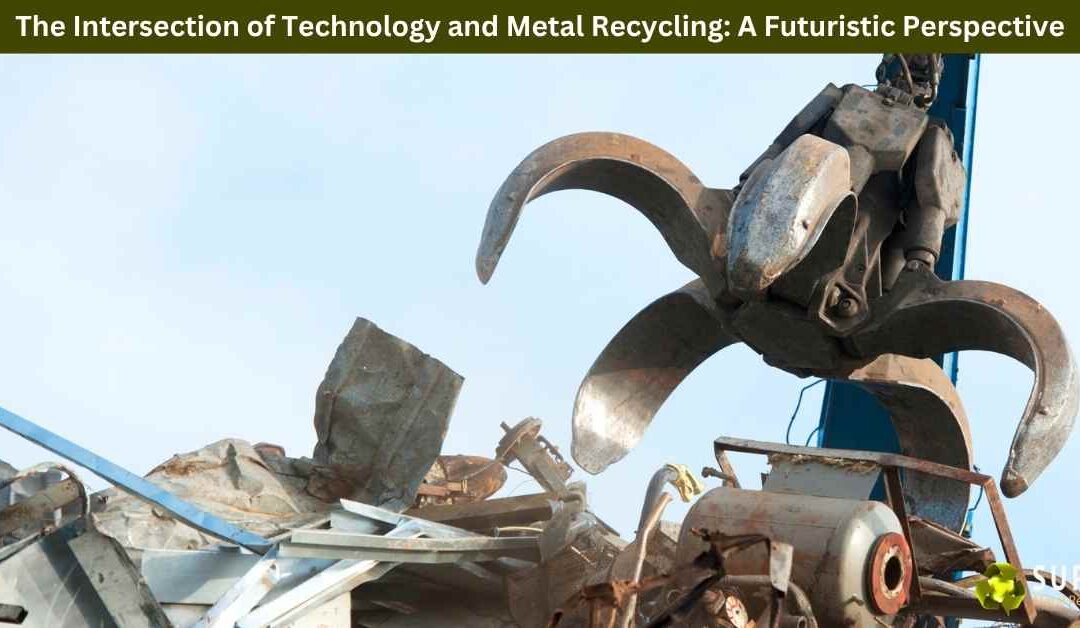Metal recycling has come a long way from its humble beginnings. What was once a straightforward, manual task of collecting, sorting, and melting down scrap has transformed into a high-tech industry driven by innovation. Today, technology isn’t just helping us recycle better—it’s redefining what’s possible.
From artificial intelligence to automation and data-driven systems, we’re entering a new era where metal recycling is smarter, faster, and more efficient than ever. Let’s take a look at how technology is shaping the future of metal recycling—and why it’s such an exciting space to watch.
The Evolution of Metal Recycling: From Manual to Digital
Not long ago, metal recycling mostly relied on manual labour, visual inspections, and basic machinery. While that worked, it left room for inefficiencies—misclassified materials, slow sorting processes, and contamination that reduced the quality of recycled metals.
But as industries pushed for cleaner production and better resource management, metal recyclers began looking to advanced technology to fill the gap. Now, we’re seeing an intersection where innovation meets sustainability—resulting in a whole new landscape for recycling.
Smart Sorting: AI, Sensors & Automation
Sorting is one of the most important stages of metal recycling. If metals are incorrectly separated, the quality of the recycled product suffers. That’s why modern facilities are turning to sensor-based sorting systems, which use advanced technologies to identify materials instantly.
AI-Powered Recognition
Using machine learning and computer vision, systems can now distinguish between different types of metals—like aluminium, copper, stainless steel, and even various alloys—with remarkable precision. These smart machines learn over time and can adapt to new materials or contaminants.
X-Ray & Laser Technology
Tech like X-ray fluorescence (XRF) and laser-induced breakdown spectroscopy (LIBS) are being used to scan and analyze scrap metal in real time. These tools can identify a material’s composition almost instantly, which helps with sorting and improves the purity of recycled batches.
Robotic Arms & Conveyor Integration
Automated robotic systems work in sync with conveyors and sensors to physically sort scrap with speed and accuracy. This reduces human error, speeds up processing, and keeps workers safe from dangerous materials.
Data-Driven Recycling: Smarter Operations
We’re also seeing more recyclers use data analytics and digital tracking systems to streamline operations.
- Material tracking software monitors where each piece of scrap comes from, where it goes, and how it’s processed.
- Predictive maintenance systems keep machinery running smoothly by using real-time data to flag issues before they cause breakdowns.
- Inventory management tools ensure materials are stored, processed, and shipped efficiently with minimal waste.
This kind of technology helps recycling businesses—big or small—make smarter decisions, reduce downtime, and maximise profitability while staying sustainable.
Green Tech Meets Clean Energy
The environmental impact of recycling operations is also improving thanks to cleaner technologies.
- Electric-powered shredders and energy-efficient furnaces are replacing older, more energy-hungry systems.
- Some facilities are now powered by solar or wind energy, further reducing their carbon footprint.
- Heat recovery systems are being added to smelting units, capturing waste heat to reuse elsewhere in the facility.
We’re heading toward a time where recycling metals won’t just be eco-friendly—it’ll be nearly carbon-neutral.
A Glimpse Into the Future: What’s Next?
The future of metal recycling is full of promise. Here’s what’s on the horizon:
Autonomous Recycling Facilities
Imagine a facility run almost entirely by AI and robotics—where scrap comes in, gets sorted, processed, and prepared for resale with minimal human input. It’s already being tested in parts of Europe and North America.
Satellite & Drone Monitoring for Scrap Collection
Some large-scale operations are exploring drones and satellite imaging to locate and monitor scrap stockpiles—especially in remote or industrial areas. This could help improve logistics, reduce collection costs, and prevent illegal dumping.
Closed-Loop Smart Systems
More manufacturers are working with recyclers to create closed-loop systems, where waste metal from factories is automatically tracked, recycled, and returned—cutting out middle steps and keeping materials in circulation.
How It All Connects to Everyday Life
You might be wondering, “This all sounds impressive, but what does it mean for me?” The short answer: better, cleaner, and more accessible recycling services.
With technology streamlining every part of the process, the metal recycling industry can offer:
- Faster service turnarounds
- Higher value returns for scrap
- Easier and safer drop-off and collection points
- More transparency about where your scrap goes
Whether you’re a homeowner cleaning out the garage or a business dealing with regular scrap loads, these innovations make recycling more efficient and more rewarding.
Just One More Thought…
At the intersection of technology and metal recycling lies a future that’s cleaner, smarter, and more sustainable. It’s no longer about just “getting rid” of scrap—it’s about using intelligent systems to keep valuable resources in circulation.
Here at our recycling yard, we’re already embracing many of these innovations—and we’re constantly on the lookout for the next leap forward. Because when recycling works better, everyone benefits: the planet, the economy, and you.
Got metal to recycle? Let’s show you what the future of recycling looks like—right now.
If you are in Rowville, and looking for a metal recycling service, this is the best way to visit us.
Super Metal Recycling
345 Frankston – Dandenong Road, Dandenong South VIC 3175
(03) 9706 4909


Recent Comments